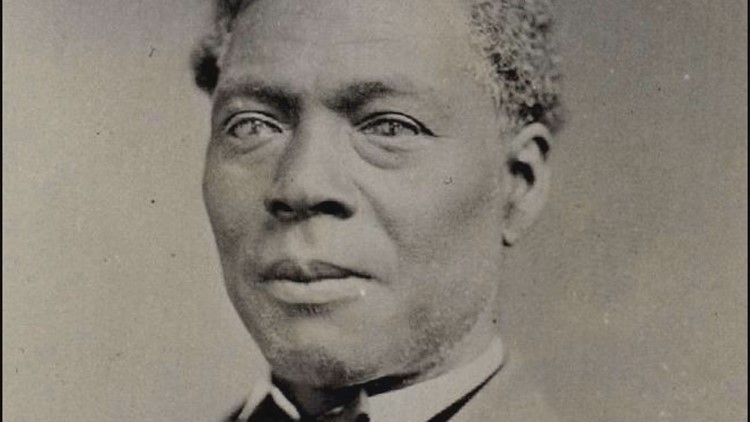COTTLEVILLE, Mo. — St. Charles County Executive Steve Ehlmann was researching his 2004 book “Crossroads: A History of St. Charles County, Missouri” when he discovered the little-known story of Archer Alexander.
Alexander was a slave who risked his life to provide information to the Union army during the Civil War. For his heroism, Alexander received an unusual honor on June 28: the renaming of a creek. That creek was Tributary B, which runs under Highway 364 and into Dardenne Creek.
“Before I went back to law school, I was a history teacher, so obviously I’m prejudiced in favor of history,” said Ehlmann, explaining his interest in Alexander’s story. “It’s important that we understand during the Civil War, it wasn’t just whites who were working to save the Union.”
In 1830 Alexander came to St. Charles County as a slave, the property of Richard Pittman.
“His owner was a Confederate sympathizer. He (Alexander) overheard him and some of the other neighbors talking about sabotaging the bridge over the North Missouri Railroad,” said Ehlmann. “He also found out that on the Campbell farm that there were guns that were being hidden. You couldn’t have a gun unless you were in the militia during the Civil War here.”
It was a bold and dangerous move by Alexander that probably saved dozens of lives.
“It took a lot of courage,” said Ehlmann. “It meant he eventually had to leave his wife and run away.”
Alexander escaped to St. Louis where he met William Eliot, the abolitionist who founded Washington University and tried to help the runaway slave.
“Protected him from slave catchers who tried to bring him back here,” said Ehlmann.
In 1869, 13 years after Alexander’s escape, his face was sculpted along with Abraham Lincoln for the Emancipation Memorial in Washington, DC. William Eliot was on the monument committee and provided a photograph of Alexander after a conversation with sculptor Thomas Ball.
“The Italian sculptor says ‘Well, I’ve seen a picture of Abraham Lincoln but I’ve never seen an African American,’” said Ehlmann. “And of course he gives him the picture of Archer Alexander and it’s his likeness that’s on the statue in Washington, DC.
The creek was officially named Archer Alexander Creek after approval from the Missouri and U.S. boards on Geographic Names. Resolutions asking for the name change were passed by the St. Charles County Council, O’Fallon City Council, and Cottleville Board of Aldermen. Why Tributary B?
"I got out an 1875 atlas," said Ehlmann, "and found out that Tributary B runs through what was the Campbell farm where Archer Alexander found the guns that he reported that was the reason he had to run away and not come."



